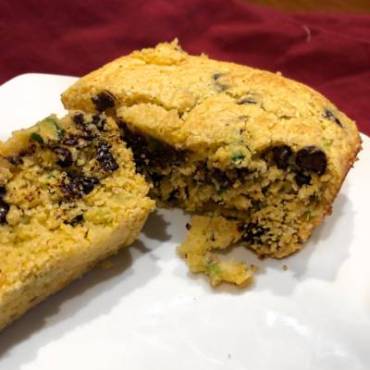You would think that growing up in Florida, a state with water on three sides, I would have been introduced to a lot of fish as a kid. However, it also being a part of the south meant that the diet was more “meat heavy.” In fact, it wasn’t until I moved to New York that I really started enjoying fish. Now I’m not sure if that’s because it was Manhattan and I felt I had to be an explorer, or if it was because I moved here at 23 years old and my palate was finally maturing past ramen noodles in a cup. Now there’s nothing wrong with ramen (except perhaps its sodium content), but let’s just say that eating it all through college, well, I’d met my limit.
My recent venture into becoming a pescatarian has taught me there’s an overwhelming variety of fish out there and tons of ways to cook them. Sometimes I come across people who scrunch up their face at fish recipes because they don’t like the “fishy smell.” To them I’ll repeat what my fisherman dad once told me, “Honey, if a fish smells fishy—don’t eat it!” This was confirmed in my recent fish week at school. If it smells fishy it means it’s not fresh so don’t eat it!
I’ve also come across people who like fish fillets but give me the scrunched up “yuck face” when I order a whole branzino at dinner. I think the eyes and tail still being attached reminds people that they’re eating something that was recently alive.
Me being a food adventurer—I don’t mind it. I mean where do you think that Christmas ham comes from?!
Okay so maybe you like fish (I mean hopefully you do if you’re reading this week’s post!) and maybe you like whole fish (the flavor is really so much better), but maybe you aren’t exactly sure how to get it from an eyeball/tail/fin-ful fish to a clean and tidy fillet. Well I’m here to help.
There are two categories of fish: round fish and flat fish.
Round fish are fish like snapper and salmon. Flat fish are the flounders and soles of the water. And yep—you guessed it, they are shaped differently (in case you’re not following one is round and one is flat). They’re pretty much filleted the same so I won’t go into details on both. Really the only true differences are that a flat fish gives you 4 fillets as opposed to 2 fillets from a round fish; and the only the difference in technique is that the spine of the fish is in a different location.
Today we are filleting a round fish, specifically a branzino.
1. Cut the fins and tail off with scissors.

2. Scale the fish. You can do this with a basic kitchen knife simply by holding the tail and running the back of the knife underneath the scales in quick strokes. There’s also a cool little kitchen gadget you can buy for a few bucks that’s geared specifically for this task, but I just use a knife.

3. Rinse the fish and feel for any stray scales. The fish should feel smooth.
4. Cut along the bottom of the fish to open the stomach cavity. Discard stomach contents. Rinse the stomach cavity thoroughly removing any remaining blood.


5. Locate the pectoral fin (towards the head of the fish) and make an incision on the side of the fish from the fin down to the belly.
6. Turn the knife around (angled toward the head) and cut from the fin to the top of the fish. Repeat with the other side to remove the head completely.


7. Using a fillet knife, make a small incision from the head to the tail right along the dorsal fin (this is the fin on top of the fish).

8. Separate the fillet by gently lifting the flesh while smoothly cutting along the original incision. A good way to keep the bones out of your fillet is to cut at an angle while pressing against the bones with the knife. Use short, smooth strokes cutting from the head to the tail. In the middle of the fish is the spinal bone, run the knife over the spine, and again at an angle using smooth strokes to cut away the flesh while keeping the bones underneath the knife.



9. While cutting the bottom part of the fish, hold the flesh with your hand so it separates easily.

10. Flip over and repeat on the other side.
11. To remove the skin, make an angled cut from the tail to the head (~1/2 long). Grasp the tail with your nondominant hand and wiggle the tail from side to side while cutting away from the tail between the fillet and the skin.




The Cook’s 2 cents:
· When scaling the fish, be careful, the scales tend to fly all over. I’d recommend doing this over the sink.
· Before removing the skin, trim away any inedible parts of the fillet i.e. the stomach cavity. This will make it a little easier to take the skin off since you will have a smaller piece to deal with.




